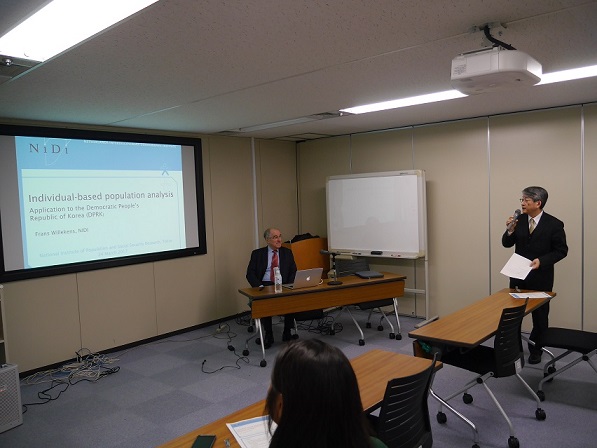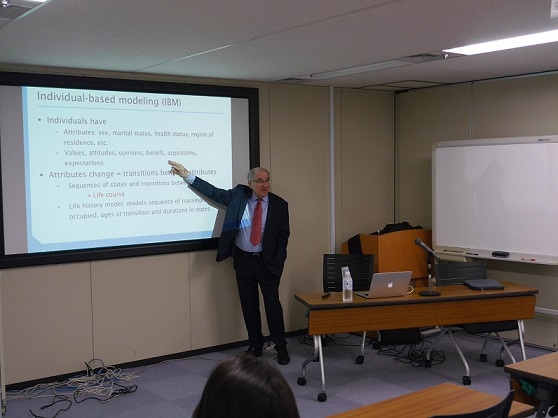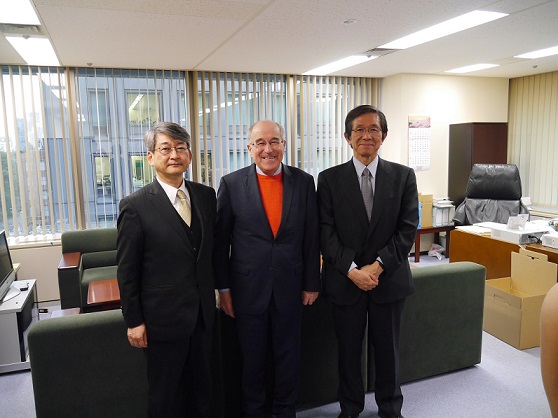individual-based model (IBM)を用いた朝鮮民主主義人民共和国の人口分析
-
National Institute of Population and Social Security Research
国立社会保障・人口問題研究所 特別講演会
下記の要領で国立社会保障・人口問題研究所の特別講演会を開催いたしました。
日時 : 2017年3月24日(金)14:00 ~ 16:00
場所 : 日比谷国際ビル(内幸町)6階 国立社会保障・人口問題研究所 第4会議室(地図)
講演者: フランス・ウィルケンス(Frans Willekens)(オランダ学際人口研究所(NIDI))
題目 :「Individual-based model (IBM) を用いた朝鮮民主主義人民共和国の人口分析」
ご講演の概要
Individual-based models (IBM) and microsimulation allow for greater flexibility than conventional cohort component models. They also permit an internally consistent approach to missing data. IBM describe life histories of fictitious individuals. Individuals are defined by personal attributes, such as age, sex, education, occupation and health status and persons with the same observed and unobserved attributes are identical. Life histories are operationalized as sequences of states and transitions between states. Transition rates are individual properties, as proposed by Keyfitz and Caswell. They depend on the characteristics of the individual and context. The occurrence of a transition and the age at transition depend on the individual transition rates and chance.
Transition rates are estimated from data. Censuses, surveys and population registers are main sources of data. To study a population or project a population, a representative sample is taken. The life histories of individuals in the sample and their offspring are projected into the future using empirical transition rates and hypotheses about future changes in transition rates.
The method is illustrated using published data from DPRK, in particular the 2008 Census and the Socio-Economic, Demographic and Health Survey 2014 (SDHS-2014).
The data used are available at:
2008 Census: National Report
The SDHS-2014 collected information from 13,250 households. the report
Willekens先生の略歴



* ご講演は英語で行われました。
